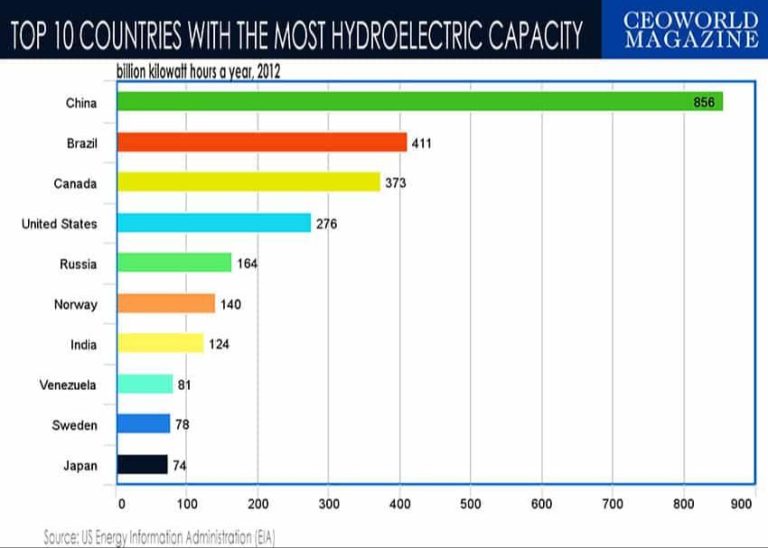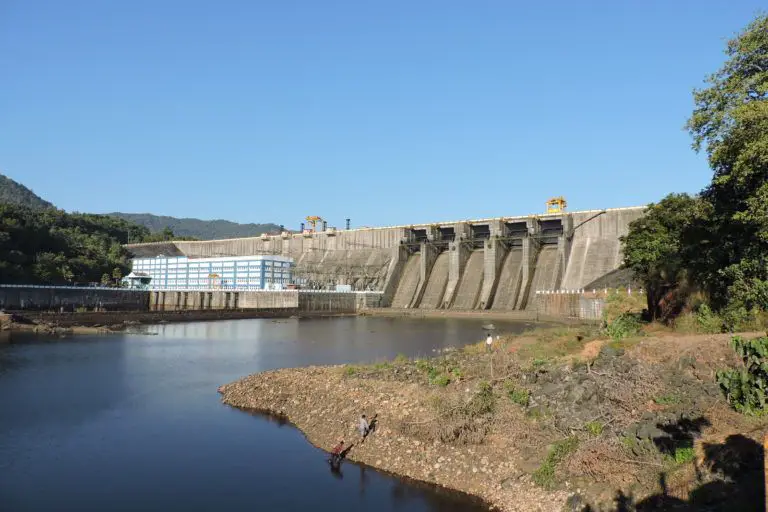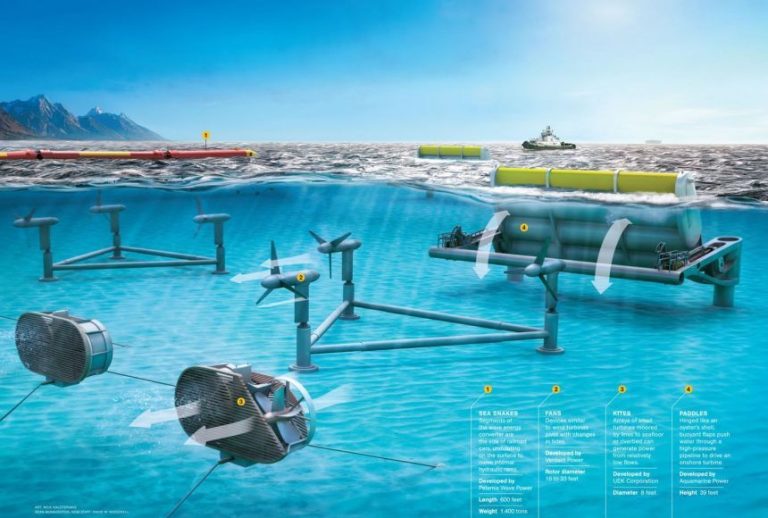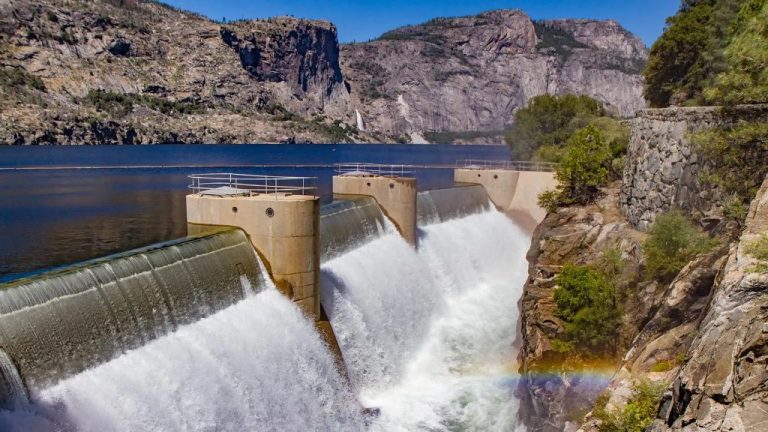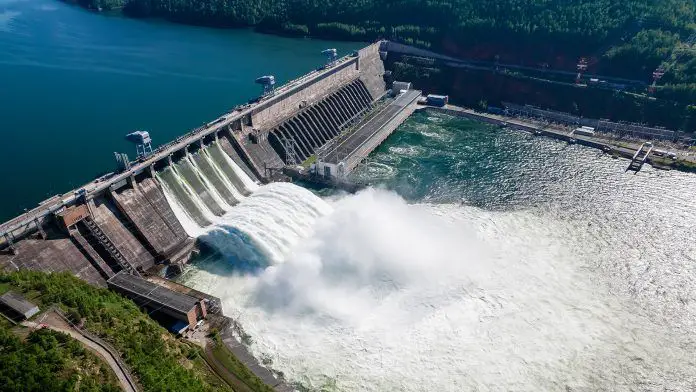Can A Water Wheel Power A House?
What is a Water Wheel?
A water wheel is a machine for harnessing the energy of flowing or falling water. Water wheels have been used for centuries for grinding grain, powering sawmills and textile mills, pumping water, and more. The earliest evidence of a water wheel dates back to the Roman Empire around 300 BCE, with vertical water wheels used to grind grain. Horizontal water wheels originated in Asia as early as the 1st century BCE for various industrial applications. From the Middle Ages onwards, water wheels became widespread across Europe and parts of Asia for powering mills and other machinery [1].
Water wheels capture the energy of a flowing stream by having paddles or buckets positioned around the wheel’s perimeter catch the water. The weight and flow of the water makes the wheel turn. The rotation of the wheel can then be used to directly power machinery like grinding stones or to transfer power via gears and shafts to other equipment. There are several major types of water wheels categorized by their orientation and mechanism for capturing the water’s energy, such as undershot, overshot, breastshot, and paddle wheels. The specific design used depends on the water source and speed of flow [2].
How Water Wheels Work
Water wheels convert the kinetic energy of flowing or falling water into rotational energy that can be used to perform work. The flowing water strikes paddles or buckets along the circumference of the wheel, creating a force that causes the wheel to turn. This rotation can then be used to power machinery through a drive shaft and gears.
The power available from a water wheel depends on the flow rate and density of the water as well as the design of the wheel. According to the physics, the power P available from a water wheel is calculated as:
P = η * ρ * g * Q * H
Where:
η is the efficiency of the water wheel (around 0.5-0.8)
ρ is the density of water (1000 kg/m3)
g is the gravitational constant (9.81 m/s2)
Q is the flow rate (m3/s)
H is the effective head of water (m)
So the power increases with higher flow rates and falls. The key is harnessing the kinetic energy of moving water effectively based on the site conditions and intended application.
Water wheels come in two main designs: undershot wheels that sit below the water flow and overshot/breastshot wheels where the water sits above the wheel. Undershot wheels generate less power but work with lower heads. Overshot wheels can utilize even small flows with high heads effectively (source). The optimal design depends on the site.
Water Wheel Designs
There are several main types of water wheel designs that have been used historically and are still used today. The choice of design depends on the site conditions, such as water flow rate and drop height.
Undershot Wheels – With these wheels, the water passes under the wheel and hits the paddles at the bottom. This design works best with fast-moving water and a low drop height. Undershot wheels generate less power, but they can operate in shallow streams.
Overshot Wheels – For overshot wheels, the water flows over the top of the wheel into buckets or paddles at the highest point. Overshot wheels require more drop distance, but they are very efficient and can generate significant power from high head water sources.
Breastshot Wheels – Breastshot wheels receive water at roughly the midpoint of the wheel. This style works for moderate water flows and drop heights. Breastshot wheels are less efficient than overshot designs but more efficient than undershot wheels.
Pitchback Wheels – These are a variation on breastshot wheels, where the water is delivered just above the bottom of the wheel. They are well-suited for higher flow rates with smaller drop distances.
Calculating Water Wheel Power
The power generated by a water wheel depends on two key factors – the volume flow rate of water and the height the water falls, known as the head distance. The basic formula for calculating water wheel power is:
Power (Watts) = Volume Flow Rate (m3/s) x Head Distance (m) x 9.81 (acceleration due to gravity)
For example, if a water wheel has a flow rate of 5 liters per second (0.005 m3/s) and a head distance of 2 meters, the power would be:
Power = 0.005 m3/s x 2 m x 9.81 m/s2
= 0.098 Watts
The key parameters needed for this calculation are:
- Volume flow rate (m3/s) – the amount of water flowing per second.
- Head distance (m) – vertical distance the water falls onto the wheel.
By multiplying flow rate by head distance, we calculate the theoretical power available. The acceleration due to gravity constant (9.81 m/s2) converts the units to Watts of mechanical power.
This basic power equation can estimate water wheel energy generation. For greater accuracy, factors like efficiency losses should be incorporated into more advanced calculators (Source – https://calculator.academy/water-wheel-power-calculator/).
Typical Home Energy Use
The average home in the United States uses about 877 kWh per month, which equals 10,500 kWh per year (1). This energy is used for lighting, appliances, heating and cooling systems, and other electronics. The breakdown of energy use in a typical home is:
- Heating and cooling: 43%
- Appliances and electronics: 13%
- Lighting: 12%
- Water heating: 18%
- Other (fans, home office equipment, etc.): 14%
The largest electricity guzzlers in most homes are central air conditioning, electric heaters, hot water heaters, large appliances like refrigerators and electric stoves, and in some homes, electric vehicles (2). Newer, ENERGY STAR certified appliances can reduce energy use significantly. For example, switching to LED light bulbs, programming the thermostat efficiently, and upgrading to an ENERGY STAR refrigerator can help cut electricity usage.
Understanding how much electricity typical appliances use is helpful when determining the feasibility of renewable energy like water wheels. A refrigerator may use 500 kWh per year while a pool pump can use over 5 times that amount (3). Examining energy bills and conducting an energy audit can provide clearer insights for a specific home.
(1) https://www.energybot.com/blog/average-energy-consumption.html
(2) https://majorenergy.com/whats-the-average-home-energy-consumption-in-your-state/
(3) https://greenlogic.com/blog/the-top-5-biggest-users-of-electricity-in-your-home
Sizing a Water Wheel for a Home
To determine if a water wheel can generate enough power for a home, you need to compare the potential power generation to the home’s energy needs. According to the Water Wheel Power Calculator, the key factors in sizing a water wheel system are:
- Water flow rate (gpm)
- Head height (vertical drop)
- Wheel diameter
For example, with a flow rate of 100 gpm, head height of 10 ft, and wheel diameter of 5 ft, the calculator estimates the water wheel can generate about 1.5 kW. The average US home uses about 900 kWh per month, or 30 kWh per day (Design calculations for overshot waterwheels). To meet this demand solely with a water wheel would require a 20 kW system.
Therefore, for most homes, a water wheel would need to be sized appropriately and serve as part of a hybrid renewable energy system. The water wheel can offset some electrical loads while solar panels or other sources provide additional generation. Proper sizing requires calculating your location’s hydro resource potential and modeling power production versus energy demand.
Building a Home Water Wheel
Constructing your own water wheel to power a home is an ambitious but achievable DIY project for an intrepid homeowner. The key requirements are access to flowing water, quality materials, proper site selection and preparation, and patience to build it right.
For materials, the water wheel itself can be built from wood, metal, plastic or other durable substances. The wheel should be large enough to capture substantial water flow, but not overly heavy. The axle connecting to the generator should be metal for strength. Other required components are the generator or alternator to produce electricity, wiring, and mounting hardware to anchor the wheel and connect to your home’s electrical system.
Choosing the right site is critical. Look for a part of the stream or river with consistent, fast-flowing water. The wheel must be secured in the water channel and have pipes or a flume to concentrate the water flow towards the wheel. Make sure the installation complies with any regulations for your water source.
After preparing the site, build a sturdy water wheel with balanced blades able to efficiently capture the kinetic energy of the moving water. Mount the generator and test the power production before connecting to your home. Aim to produce enough electricity to significantly supplement your home’s needs. With careful planning and construction, a home water wheel can provide clean, renewable energy for years to come.
Water Wheel Efficiency
While water wheels can theoretically reach efficiency levels above 80%, real-world limitations mean the actual efficiency is often much lower. Factors that reduce efficiency include:
- Friction losses in bearings and drive mechanisms
- Leakage around buckets or paddles allowing water to escape
- Improper wheel design or improper positioning of water flow
- Backsplash striking buckets after they have passed the bottom position
According to research, maximum real-world efficiency of overshot and undershot wheels is around 60-70% [1]. Breastshot wheels tend to have lower efficiency of 40-60% [1]. Smaller hobbyist water wheels may only reach 10-30% efficiency.
To optimize efficiency, the water wheel design must match the site conditions, with proper wheel width, bucket placement, and optimal water velocity and flow rate. However, even a relatively inefficient water wheel of 25% efficiency can still generate useful power from a flowing stream.
Cost Analysis
When considering a water wheel to power a home, it’s important to analyze the costs compared to conventional power sources like the electric grid or solar panels. The main costs for a water wheel system include:
- Construction and installation – Building a custom water wheel and setting up the system can range from $6,000 for a small 7-foot diameter wheel to over $50,000 for a large commercial system, according to Water Wheel Factory.
- Maintenance – Water wheels require periodic maintenance and part replacements, averaging $500-2,000 per year according to most manufacturers.
- Batteries – Storing the generated electricity in batteries can add $5,000-$10,000 or more to costs.
In contrast, being grid connected averages $1,500 per year for a typical home. Solar panel systems range from $10,000-$30,000 installed. Over a 20 year lifespan, a home water wheel may cost less overall than electricity from the grid, but will likely cost more than an equivalently sized solar system. The break-even point depends greatly on factors like the home’s energy use, wheel size, stream flow, and electricity rates.
Water wheels can make the most economic sense for off-grid homes with access to year-round flowing water. For grid-connected homes, solar panels usually provide cheaper renewable power. However, water wheels can still be a viable option for renewable energy based on a home’s specific needs and resources.
Environmental Benefits
Water wheels provide a source of renewable and sustainable energy that can reduce reliance on fossil fuels. According to research from the University of Southampton, traditional water wheels could play a role in increasing sustainable energy use (https://www.southampton.ac.uk/news/2006/02/water-wheels-could-generate-electricity.page). Water wheels utilize the kinetic energy from flowing water, which is continuously replenished naturally in the hydrologic cycle. This makes hydropower from water wheels a renewable resource.
Generating electricity from water wheels emits no greenhouse gases or other pollutants. According to a report from the Attleboro Public Library, relying more on hydropower from water wheels can help mitigate climate change and reduce carbon emissions (https://attleborolibrary.org/wp-content/uploads/2021/09/Water-wheel-pg-2.pdf). Water wheels to generate electricity can be paired with battery storage for a completely clean energy system. Their simplicity also allows local construction and maintenance, reducing reliance on external energy sources.
Overall, water wheels provide a sustainable energy solution by harnessing the renewable power of flowing water. With careful environmental stewardship, they can be an eco-friendly source of energy for homes or communities seeking energy self-sufficiency and independence.

